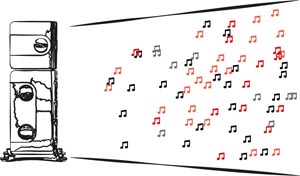
Kii Audio defies the laws of physics. The active monitor speaker THREE sounds so clean, linear, and lively in any room it feels like the walls have disappeared. The BXT Bass Extender lends the system even more versatility.
— There are times in an editor’s daily work life when opportunities arise that put an ear-to-ear smile on his face and that just can’t happen soon enough — but then also lead to a bit of heartache at the same time. As an old hand, he knows that if he spends three weeks with the product in question, it will be a long time, maybe even donkey’s years, before he can even begin to feel satisfied again with his own system back at home.
When Kii Audio asked us in the summer if we’d like to test the THREE along with the BXT module, I knew it would turn out to be a euphoric while painful experience. This loudspeaker is so different there’s literally nothing to compare it to. Thanks to the chassis configuration and the exceptional work of the DSP, a pair of THREE loudspeakers sounds as direct and precise as a set of headphones — the kind with perfect soundstage. Although they are comparatively compact, the speakers belt out frequencies toward your listening position with such force you’d be forgiven for imagining they might be full-sized giant loudspeakers. What’s more, they work well in any room. In a nutshell: Once you’ve become addicted to them, you could suffer irreparable damage to the way you view your own system — a fate that could end up costing you a pretty penny.
As you read on, you’ll get a good idea of the suffering they’ve caused me. To understand the advantages these exceptional active loudspeakers offer, we first need to brush up on some basic principles of physics.

Darned Geometry
Broadly speaking, there are two types of loudspeakers out there in the world: The ones you remove from the factory packaging, place in front of the intended listening position, and listen as off they go, hell for leather. And then all the others: The ones you need to work on, where every single millimeter of difference results in subtle yet sometimes crucial nuances in terms tonality, timing, and stage graduation. Cynics label these two categories as “low maintenance” and “fiddly” or even “sweet natured” and “difficult,” whereby such paradoxical claims prove these self-proclaimed experts have no idea what they’re talking about. Whether loudspeakers belong to one grouping or the other has no bearing whatsoever on quality. Loudspeakers themselves can’t do anything about how they behave in a room.
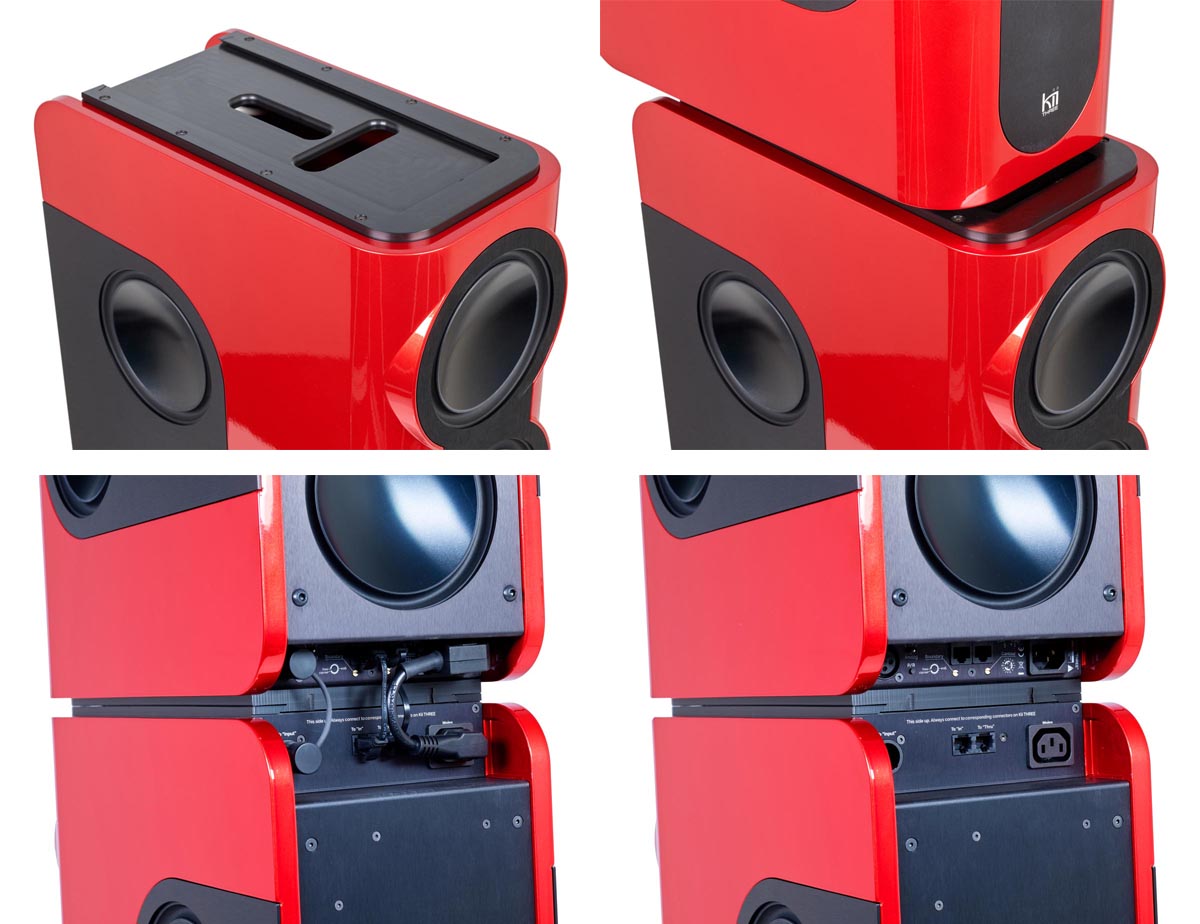
Okay, they can do something, but only indirectly. In general, small, slim speakers excite a listening room less than colossal, human-sized speakers with diaphragm surface areas measuring two square meters. You don’t have to be a physicist to understand that correlation. The more a room is excited by sound energy, the stronger the room emerges as an audible source. And that’s really a drag because the undesirable reflections aren’t distributed harmoniously across the frequency range. While the treble and upper mid-range reach the listening position bunched relatively close together (that is, rather indiscriminately), low frequencies are dispersed spherically. The result is utter chaos: Some frequencies aggregate and reverberate uncontrollably while others are obliterated, creating tonal gaps and ultimately distorting the signal reproduced by the converter.
So if excitation is responsible for so many issues, why don’t people pay more attention to it? I’ll tell you why: Because the only way to prevent it is to set up an anechoic chamber, a room that, with all its acoustic modules, is about as comfortable as a recording studio control room. It may be okay for working in but you wouldn’t want to live there. Active technology and smart signal processors (DSPs) can provide some relief: Systems such as Audyssey and Dirac measure any detrimental effects resulting from the interaction between the speakers and the room, compensating and correcting whatever needs to be compensated and corrected. This works well, sometimes it even works wonders, but at the end of the day it is nothing more than damage control.

This is precisely where Kii Audio comes thundering in — a bolt out of the blue to stop us in our tracks. You already guessed this twist was coming, didn’t you? The creative minds at the innovative fledgling company have come up with a clever trick that’s not only able to limit excitation but takes one step further to completely prevent all of its most harmful effects. The compact THREE loudspeaker emits sound toward the listening position over a tweeter and a mid-range, while the bass drivers have been positioned on the sides and back of the housing. Altogether, each stylish and colorful active loudspeaker features four identical 16.5-centimeter bass drivers as well as the pair on the front. And thanks to its bundled dispersion, the spatial effect of all this can be disregarded. Each chassis is driven by its own 250-watt amplifier section, which receives its signals directly from a discrete D/A converter — so six drivers, six amplifiers, and six DACs. There’s also a circuit board with a central brain in the form of a DSP as well as an A/D converter: You can control the THREE over its single XLR connection either with AES/EBU or an analog input. Given the speaker’s compactness, it’s easy to imagine just how tightly all the equipment and electronics inside the closed housing are packed in.
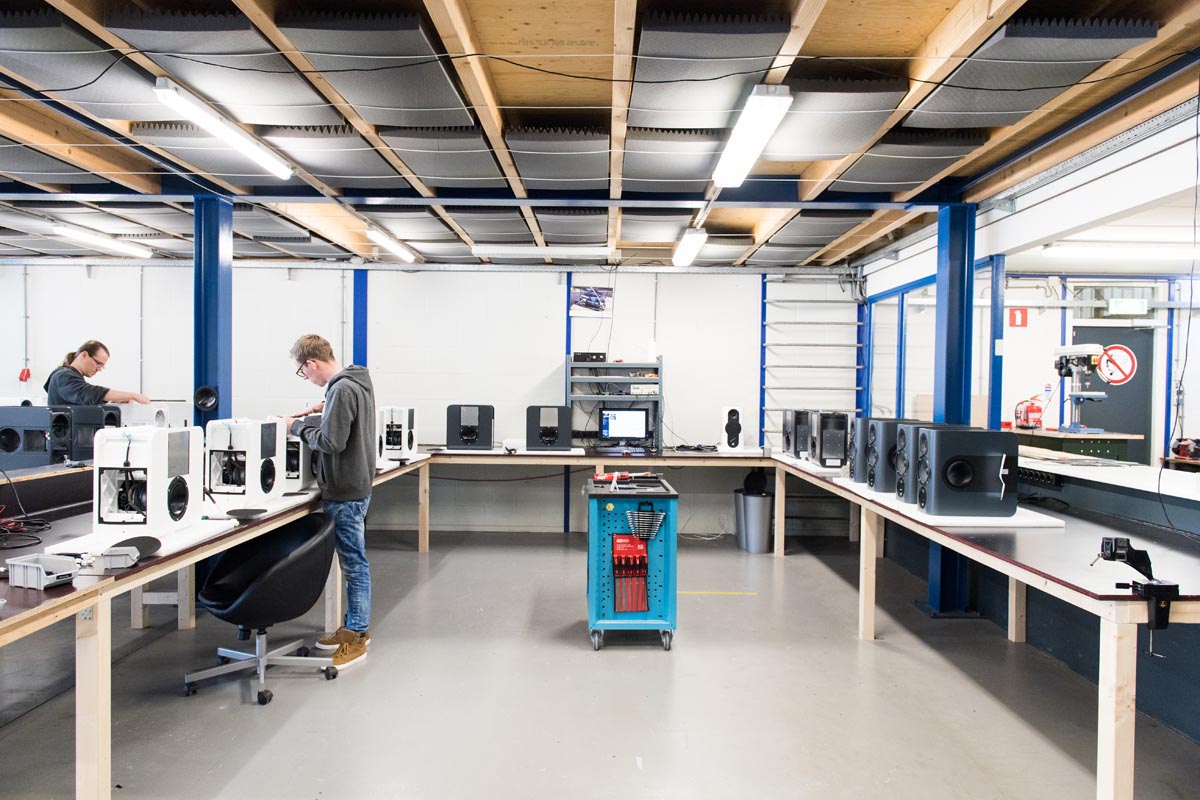
Now for the actual trick: The two bass channels in the rear section are delayed to such a degree by the signal processor that their phase-inverted sound overlaps with that of the side drivers. While the Kii pushes direct sound forward into the room unhindered, the bass next to and behind the loudspeaker is completely eliminated. The high-energy bass frequencies can’t excite the room until they’ve passed the listener as direct sound — after all, the walls behind and to the side of the listener’s position are ultimately still reflective surfaces. The resulting parasitic noise created there is, however, differentiated by our brains because it lags far behind the direct signal. Kii leverages a blessing in our sense of perception to its advantage: Even if something were to boom or rumble in the room, our gray matter would interpret the actual music signal as flawlessly clean and linear.
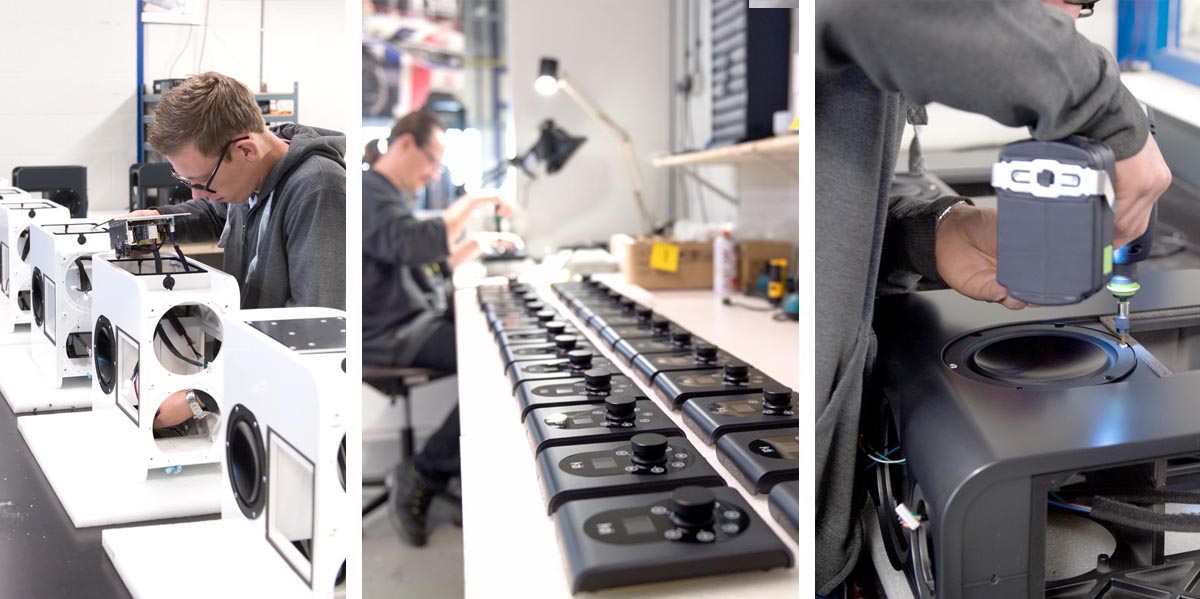
We can easily put the DSPs’ work to the test by supplying the THREE loudspeakers with some hefty material. Let’s get started with London Grammar’s dark and richly textured track “Hey Now”. It has precisely the kind of deep low frequencies that are great fun but cause all sorts of issues in many rooms. This doesn’t pose a challenge for the THREE, which turns the song into a mesmerizing massage for the ear in our listening position. The deep rumbling bass sounds jet-black, tight, and yet so rich that we feel as though we could almost reach out and touch the air pressure with our hands. The voice of singer Hannah Reid, the electric piano, and the occasional percussion effects appear so stable, vivid, and sharp in between the loudspeakers we could trace an outline of the stage. Getting up and going over to the side of one of the loudspeakers results in the thunderous bass surprisingly breaking off rather abruptly. And the situation is the same when we go around to the back of the THREE. The drivers on the sides and on the back of the speaker operate with visible throw but seem not to emit any sound. “Fascinating,” as Mr. Spock would conclude. We call this kind of sound dispersion “cardioid” (see box), and Kii Audio names all the sophisticated technology behind it “Active Wave Focusing.”
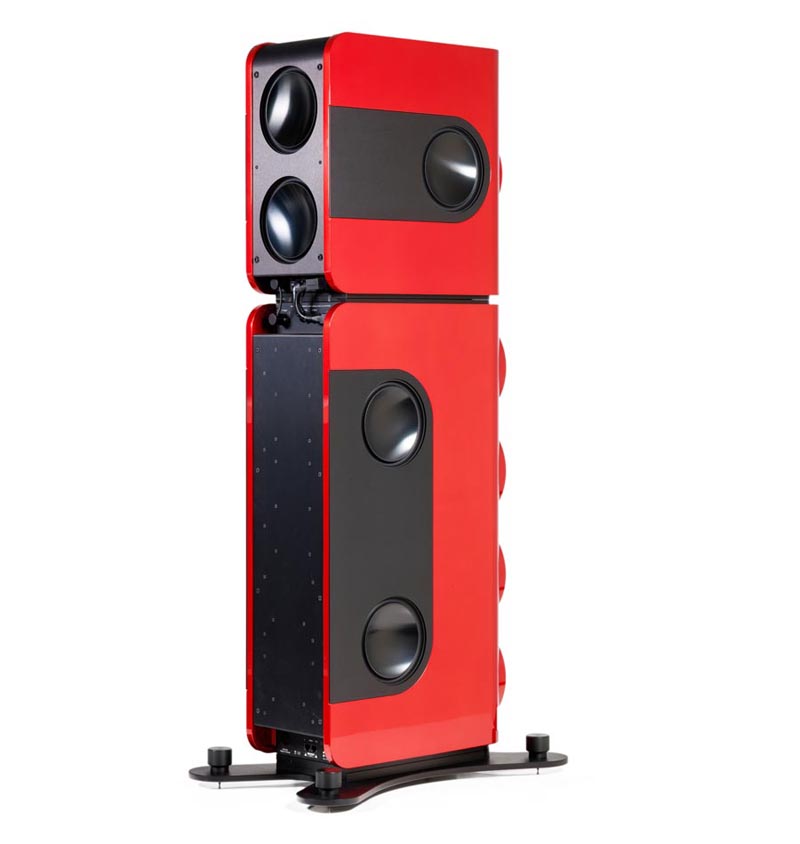
Everything’s Under Control
To gain perfection in the THREE’s active wave focusing, the speaker needs to know how far away from the walls it is. You can provide those parameters using a switch with 14 presets that’s located next to the terminal. Directly next to that is another microcontroller with 17 preconfigured frequency settings. But there’s an even easier way to change these settings: By using a small device called the “CONTROL.” This is a wired console-type remote control that handles various functions.
It provides the THREE with extra inputs, for instance: On the back of the Kii CONTROL you’ll find an S/PDIF connection (like the AES/EBU connection on the loudspeaker, maximum 24/192) and a TOSLINK connection (maximum 24/96) as well as a USB port for connecting computers, servers, and the like (maximum 32/384 as well as DSD64/128). In addition to programing the wall distance (“boundary” settings), the small, razor-sharp display also makes it possible to configure the shelf filter (“contour” settings). Another important menu item is Phase Correction. The DSP of a Kii not only monitors elimination of the bass at the back of the speaker, it also carries out calculations to ensure the signals audible from the listening position have perfect timing — and the THREE’s sound is so on the money, any attempt by listeners to refrain from tapping their feet or getting lost in the music is completely and utterly futile. As cool as that may be and as fast as the processor may work, it does, in fact, cause some system latency. It may be irrelevant for music playback, but home cinema enthusiasts will be irritated by the delay. The CONTROL can, however, be used to adjust the phase calculation from Linear to ´Low Latency and then the playback will be in sync with the on-screen images. To ensure maximum precision, the more precise Linear mode should, of course, always be used when listening to music.
| A LOUDSPEAKER WITH A HEART | ||
|---|---|---|
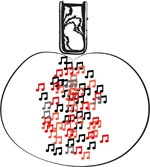 The THREE uses cardioid dispersion. Does that term sound familiar? It derives from the Greek word “kardio,” meaning “heart.” In fact, when viewed from above, the dispersion pattern of the active loudspeaker looks a bit like a heart (1): The speaker focuses its sound, emitting it forward, and the level noticeably drops on the sides. This is terrific as it practically The THREE uses cardioid dispersion. Does that term sound familiar? It derives from the Greek word “kardio,” meaning “heart.” In fact, when viewed from above, the dispersion pattern of the active loudspeaker looks a bit like a heart (1): The speaker focuses its sound, emitting it forward, and the level noticeably drops on the sides. This is terrific as it practically |
doesn’t excite the walls next to or behind its housing. The concept does, however, have a weakness: If you  view the dispersion from the side (2), it’s shaped more like a club: You get optimum sound quality when you sit in front of the speaker. The BXT eliminates this com-promise by turning the THREE into a line source that more uniformly covers the space in the room(3). view the dispersion from the side (2), it’s shaped more like a club: You get optimum sound quality when you sit in front of the speaker. The BXT eliminates this com-promise by turning the THREE into a line source that more uniformly covers the space in the room(3). |
There are, however, no issues with reflections be-cause the BXT’s side drivers and those in the back of the THREE also ensure Kii’s “Guided Wave Focus.”
|
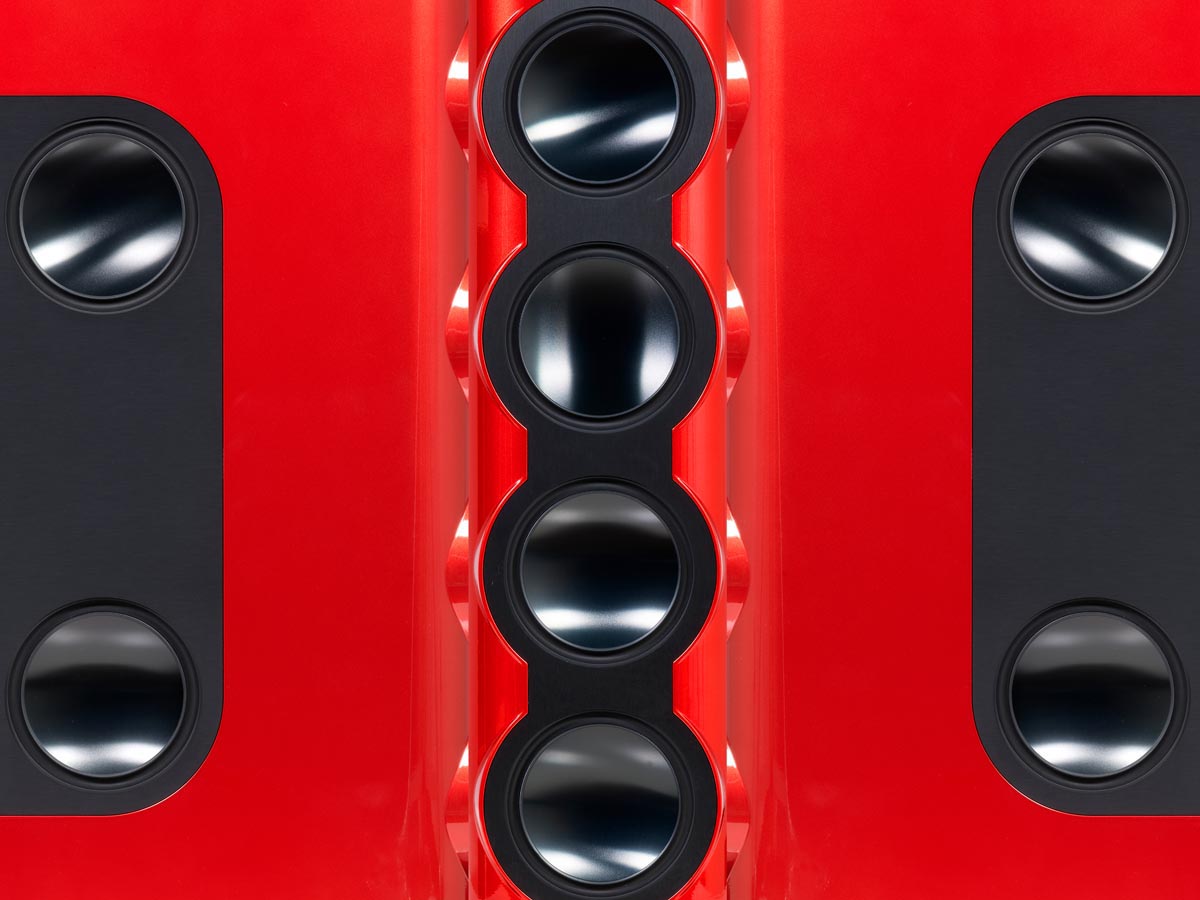
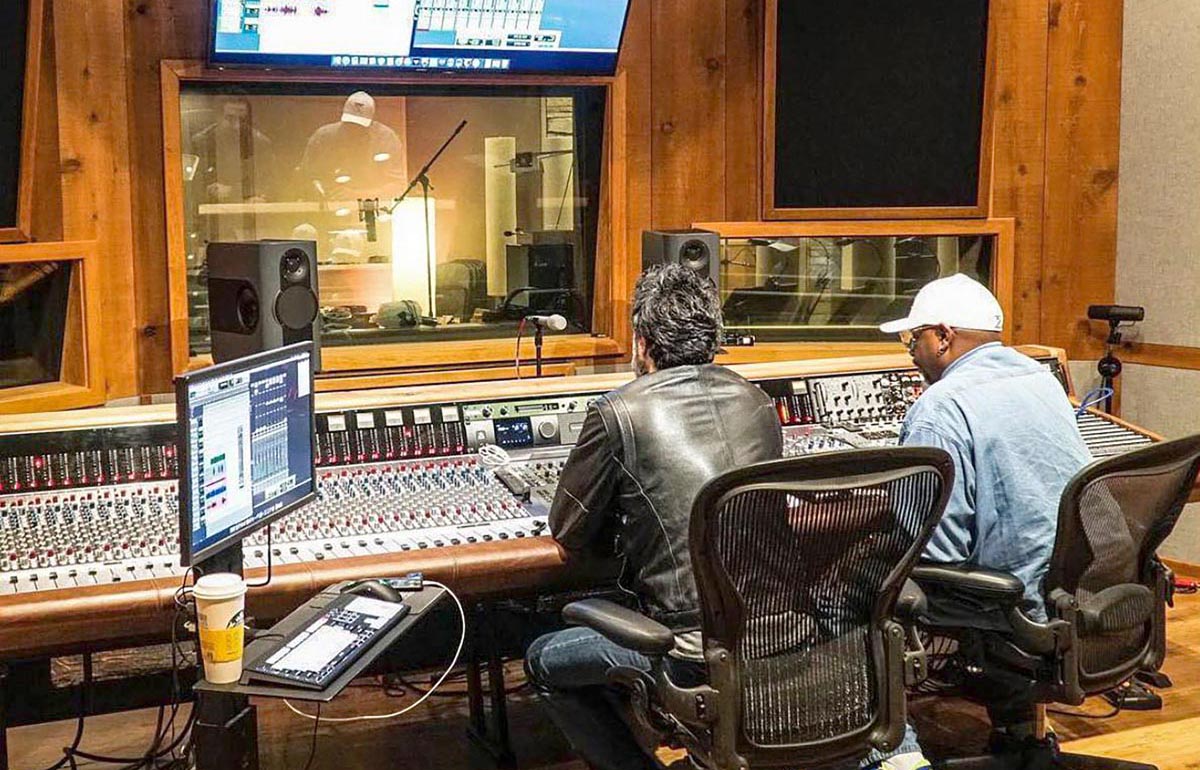
Ultimately, the CONTROL can also be used to adjust the volume by turning the central rotary knob, or it can be pushed to mute or dim the volume; and if the DIM function has been selected, pushing the central rotary knob reduces the volume to the user’s preferred preset decibel level. The system boasts a high-precision digital volume control that let’s you directly control up to five sources — Bluetooth is also included. The Kii CONTROL does not, however, really possess a handy remote control. The THREE is wired in daisy-chain format: The source is fed into one of the two speakers and the second monitor receives its signal portions with a long data cable through the KiiLink interface. The remote control is also connected to the KiiLink; it even depends on it for its power supply. Sadly there’s no getting around the umbilical cord. If other sources are connected to the CONTROL, you have no option but to leave it on the rack. That’s why the manufacturer has also integrated an RC5 interface into the loudspeaker that is compatible with many customary transmitters. The THREE is also able to receive control signals from the stylish Apple remote (approximately €25).

Not a subwoofer… and don’t you forget it!
At this point it’s time for us to slam on the brakes — you’ve probably got smoke billowing from the top of your head after reading about all the basic principles and features. Besides, it’s about time to clear the stage for the second act in this performance: Let’s now have a look at the BXT, or “bass extender.” This also gives us a great opportunity to talk about processing. To get right to the point, the processing is not from this world: The housing of the Kii speakers feel exceptionally smooth and high-end. All the paint options have a subtle yet glamorous look to them and a sense of depth that makes you want to try to reach right inside the loudspeakers.
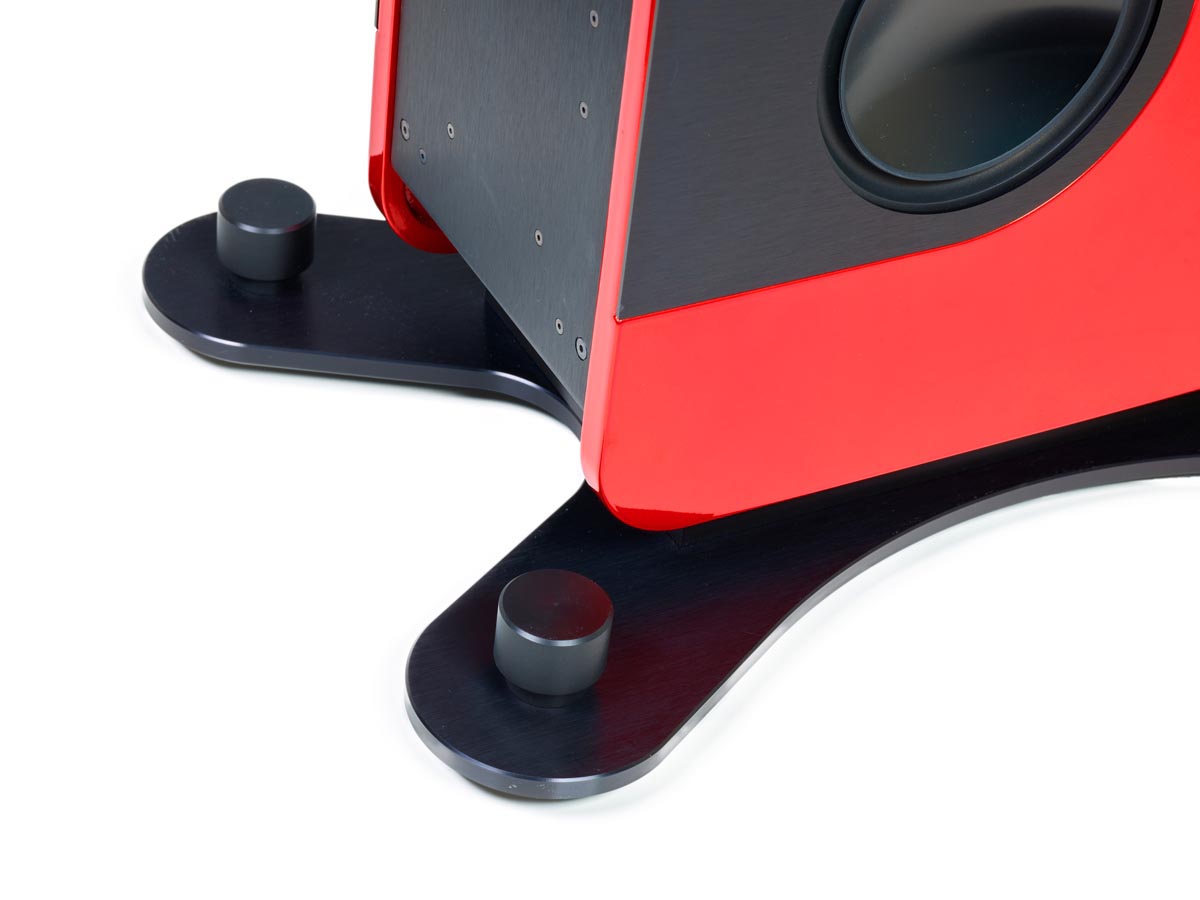
The BXT comes supplied with a black anodized aluminum base plate that can be balanced with the adjustable spikes as well as an accurate guide rail. The Bass Extender is placed on top from behind and, with the application of very little pressure, glides forward to slots neatly into place with a quiet yet satisfying “click.” The THREE is positioned on the BXT the same way. The connection feels very delicate and smooth during the setup process and yet exceptionally sturdy and stable as well. You can tilt the floor-standing speaker quite far to one side without ever having to worry it might come apart and take a tumble. Signals and power are transmitted to the THREE speaker from the Bass Extender over short patch cables.
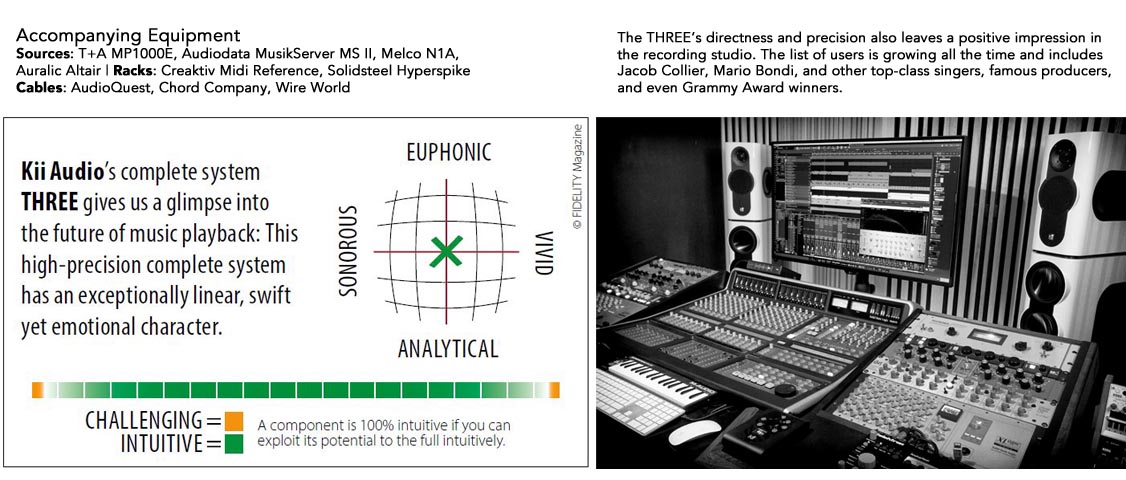
And this brings us to the BXT’s major stumbling block: With a total of eight bass drivers, you would be forgiven for instinctively thinking the rather large substructure is a subwoofer — and yet you’d be quite wrong. As its very name suggests, the Bass Extender extends the diaphragm surface area and provides a total output of 2 kilowatts. It does increase the sound pressure level but minimally at best (the DSPs ensure balance with the tweeter is maintained), and it doesn’t extend the THREE’s bandwidth downward even by a single hertz. So what does it do?
This is where the cardioid dispersion comes in, which does do some incredible things but focuses on a sweet spot and reaches its limits in large rooms. The BXT turns the THREE into a “line source.” As a result, the loudspeaker disperses the sound in a completely different way that penetrates wider and deeper into the room without altering the sound itself. You might think that would only be relevant for large rooms, but it’s also beneficial for small rooms, too. For one thing, more listeners can sit next to each other in front of the Kii. What’s more, they can also move around in front of the loudspeakers without prompting any major tonal changes, making the Kii even more suitable for everyday use. And the BXT not only helps eliminate the bass in the rear area of the loudspeaker: As its drivers go all the way down to foot level, the BXT also limits floor reflections in front of the speaker. That means it practically makes no difference at all whether you have carpet or smooth parquet flooring in the room. And this magic trick can’t be performed by any other loudspeaker out there.
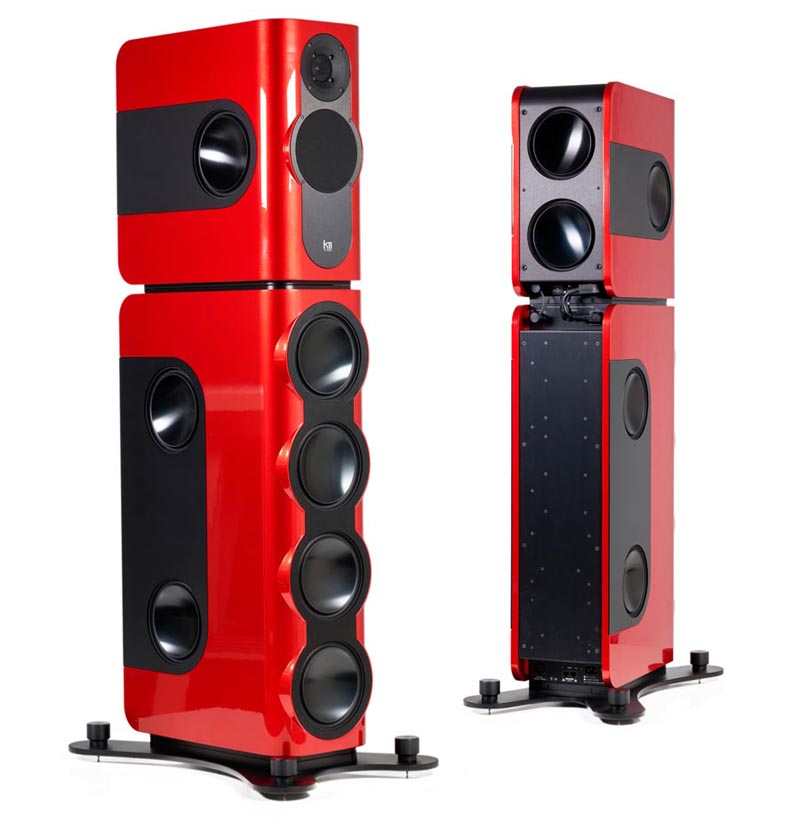
Facts On The Table
At this point, you may well be asking yourself “Why does he keep talking about physics so much? Is he trying to get out of writing a proper review?” If that’s what you’re thinking, you’ve caught me red-handed. Describing the characteristics of this exceptional system is actually very tricky. I’ve listened to lots of loudspeakers that employ special concepts: open baffle speakers, wide-frequency horn loudspeakers, and coaxial loudspeakers to name but a few. The THREE belongs in this group as it sounds completely different from conventional multiway loudspeakers — but then again, it doesn’t belong to this group because it lacks the sometimes irritating strong self-will of the aforementioned concepts.
The THREE works like a magnifying glass that reproduces exactly what the recording specifies. And it does this with a directness that brings pain to a listener if the recording is rotten and nothing but joy if the recording is good. A prime example here would be when the melancholic vibrating strings in Liszt’s “Hungarian Rhapsody” float through the listening room (on Stokowski — Rhapsodies, Sony Classical Originals). Next, the beat of Fever Ray’s “Now’s the Only Time I Know” pulsates through the room with the snare drum actually just a short, snappy pulse that the THREE directly blasts straight into my skull when the volume is nice and high. Anyone who’s ever sat next to a guitar amp and experienced “pick attack” at a really high volume will know what I mean: The THREE has really disturbingly fast attacks. It also sounds extremely clean. It ensures the fragile, seemingly endless reverb trails of the percussion instruments are crystal clear and fade into eternity without even the tiniest bit of compression.
It’s riveting right from the very first second. But it does take a couple of hours before you hear all the dimensions of the THREE’s directness and linearity. We’re so used to accepting the room as part of the playback that the directness of this loudspeaker means we have to rethink things now. But as soon as you start to pick up on this dimensionality, well … there’s no going back …
Originally Published in FIDELITY International
Review: Carsten Barnbeck
Photography: Ingo Schulz and manufacturer
Active loudspeaker | Kii THREE and BXT
Concept: three-way active monitor (bookshelf/floor-standing loudspeaker) with optional Bass Extender for optimizing sound dispersion and spatial illumination
Equipment: 1 x 2.5-mm tweeter with waveguide, 1 x 14-cm mid-range driver, 12 x 17-cm woofers, 14 x D/A converters (250 W), 1 x A/D converter
Features: switchable distance control (14 settings), high and low shelf with 17 presets or freely programmable using the Kii CONTROL, volume control (RC5 compatible), programmable mute
Connections: XLR (analog and AES/EBU), KiiLink, optional S/PDIF, TOSLINK, and USB on the CONTROL, the DAC processes max. 32/384 (only USB), Bluetooth
Frequency response: 20 Hz to 25 kHz
Finish: high-gloss white, graphite matte metallic, other colors available for an additional fee (starting at €950); test model: red metallic
Accessories: stands (€1,000/pair), wall mounts (€270/unit)
Dimensions (W/H/D): 20/120/40 cm
Weight: 51 kg
Warranty period: two years (five years after registration)
Price: about €30,350 (THREE + BXT including CONTROL), about €13,500 (only THREE including CONTROL
Company Information
Kii Audio
Drosselweg 45
51467 Bergisch Gladbach, Germany
Telephone +49 2202 2356289
www.kiiaudio.com

